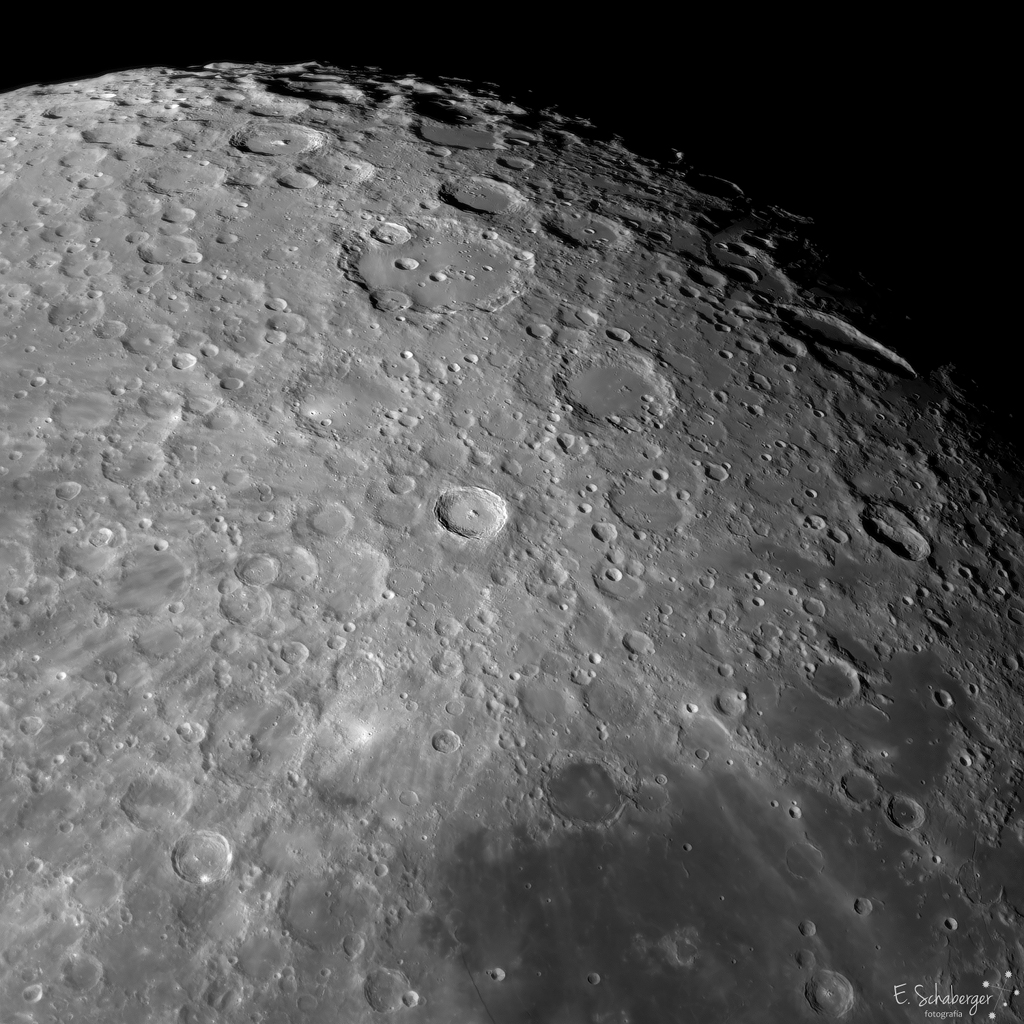안녕하세요 오늘은 NASA에서 어떤 우주의 모습을 비춰줄까요?
먼저 사진부터 감상하시죠!

이 사진의 제목은 Tycho and Clavius 입니다. NASA에서 공식적으로 제공한 설명을 보시죠.
South is up in this detailed telescopic view across the Moon's rugged southern highlands. Captured on July 20, the lunar landscape features the Moon's young and old, the large craters Tycho and Clavius. About 100 million years young, Tycho is the sharp-walled 85 kilometer diameter crater near center, its 2 kilometer tall central peak in bright sunlight and dark shadow. Debris ejected during the impact that created Tycho still make it the stand out lunar crater when the Moon is near full, producing a highly visible radiating system of light streaks, bright rays that extend across much of the lunar near side. In fact, some of the material collected at the Apollo 17 landing site, about 2,000 kilometers away, likely originated from the Tycho impact. One of the oldest and largest craters on the Moon's near side, 225 kilometer diameter Clavius is due south (above) of Tycho. Clavius crater's own ray system resulting from its original impact event would have faded long ago. The old crater's worn walls and smooth floor are now overlayed by smaller craters from impacts that occurred after Clavius was formed. Observations by the Stratospheric Observatory for Infrared Astronomy (SOFIA) published in 2020 found water at Clavius. Of course both young Tycho and old Clavius craters are lunar locations in the science fiction epic 2001: A Space Odyssey.
오늘도 광활한 우주 앞에 인간이 얼마나 작은 존재인지 깨닫게 되네요.
저는 내일도 더 좋은 사진과 함께 돌아오겠습니다, 행복한 지구여행 되세요!
'나사사진' 카테고리의 다른 글
| NASA 오늘의 사진 (2021-08-07) (0) | 2021.08.07 |
|---|---|
| NASA 오늘의 사진 (2021-08-06) (0) | 2021.08.06 |
| NASA 오늘의 사진 (2021-08-04) (0) | 2021.08.04 |
| NASA 오늘의 사진 (2021-08-03) (0) | 2021.08.03 |
| NASA 오늘의 사진 (2021-08-02) (0) | 2021.08.02 |



